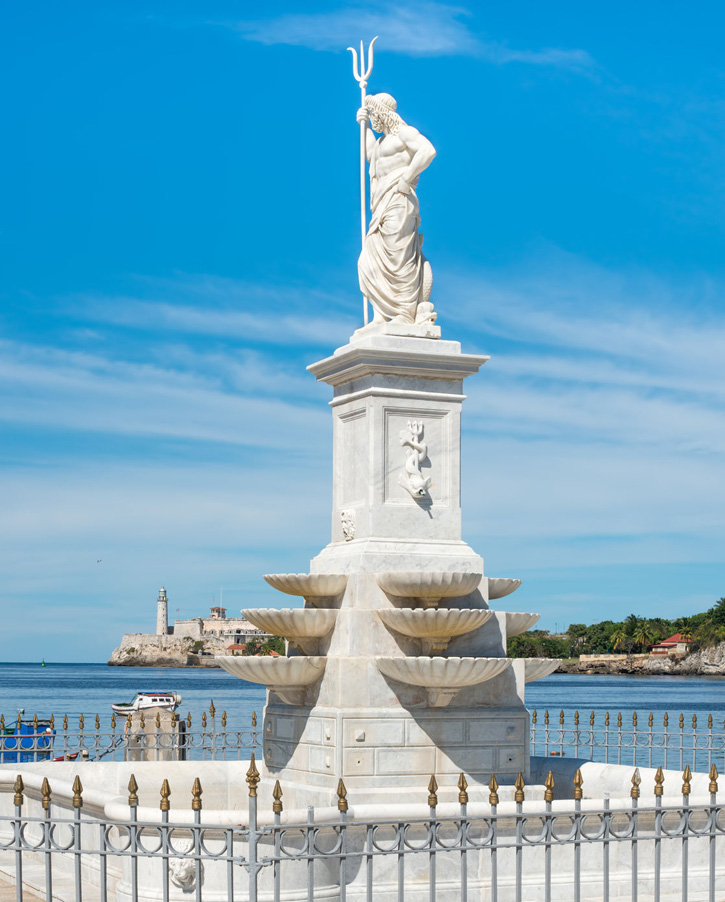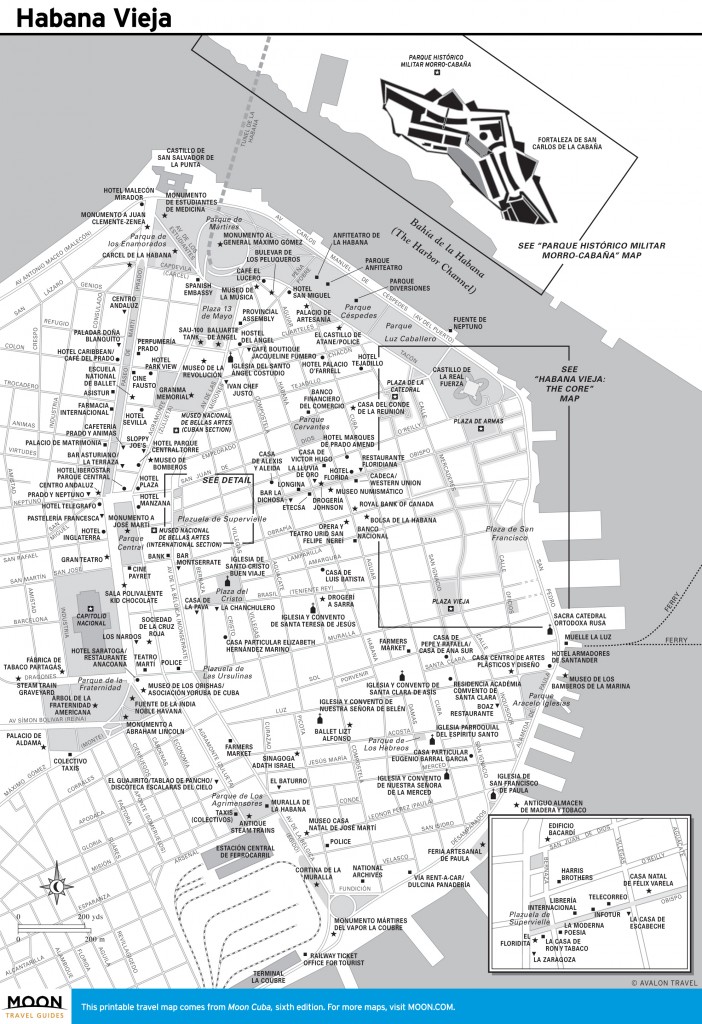Throughout most of the colonial era, sea waves washed up on a beach that lined the southern shore of the harbor channel and bordered what is today Calle Cuba and, eastward, Calle Tacón, which runs along the site of the old city walls forming the original waterfront. In the early 19th century, the area was extended with landfill, and a broad boulevard—Avenida Carlos Manuel de Céspedes (Avenida del Puerto)—was laid out along the new harborfront. Parque Luz Caballero, between the avenida and Calle Tacón, is pinned by a statue of José de la Luz Caballero (1800-1862), a philosopher and nationalist.
The entrance to the seminary overlooks an excavated site showing the foundations of the original seafront section of the city walls.Overlooking the harborfront at the foot of Empedrado is the Fuente de Neptuno (Neptune Fountain), erected in 1838.The giant and beautiful modernist glass cube at the Avenida del Puerto and Calle Narciso López, by Plaza de Armas, is the Cámara de Rejas, the new sewer gate! Educational panels tell the history of Havana’s sewer system.

Fuente de Neptuno watches over Havana’s narrow harbor channel, with Morro castle in the distance. Photo © Karel Miragaya/123rf.
Calle Cuba extends east from the foot of Monserrate. At the foot of Calle Cuarteles is the Palacio de Mateo Pedroso y Florencia, known today as the Palacio de Artesanía (Artisans Palace, Cuba #64, e/ Tacón y Peña Pobre, Mon.-Sat. 8am-8pm, Sat. 9am-2pm, free), built in Moorish style for nobleman Don Mateo Pedroso around 1780. Pedroso’s home displays the typical architectural layout of period houses, with stores on the ground floor, slave quarters on the mezzanine, and the owner’s dwellings above. Today it houses craft shops and boutiques, and has folkloric music on the patio.
Immediately east is Plazuela de la Maestranza, where a remnant of the old city wall is preserved. On its east side, in the triangle formed by the junction of Calles Cuba, Tacón, and Chacón, is a medieval-style fortress, El Castillo de Atane, a police headquarters built in 1941 as a pseudo-colonial confection.
The former Seminario de San Carlos y San Ambrosio, a massive former seminary running the length of Tacón east of El Castillo de Atane, was established by the Jesuits in 1721 (the training center for ecclesiasticals moved in 2011 to the Carretera Monumental, east of Havana) and is now the Centro Cultural Félix Varela (e/ Chacón y Empedrado, tel. 07/862-8790, Mon.-Sat. 9am-4pm, free). The downstairs cloister is open to the public.
The entrance to the seminary overlooks an excavated site showing the foundations of the original seafront section of the city walls—here called the Cortina de Valdés.
Tacón opens to a tiny plazuela at the junction with Empedrado, where horse-drawn cabs called calezas offer guided tours. The Museo de Arqueología (Tacón #12, e/ O’Reilly y Empedrado, tel. 07/861-4469, Tues.-Sat. 9:30am-5pm, Sun. 9am-1pm, CUC1) displays pre-Columbian artifacts, plus ceramics and items from the early colonial years. The museum occupies Casa de Juana Carvajal, a mansion first mentioned in documents in 1644. Its most remarkable feature is a series of eccentric floor-to-ceiling murals depicting life as it was lived in the 1700s.

Habana Vieja
Excerpted from the First Edition of Moon Havana.